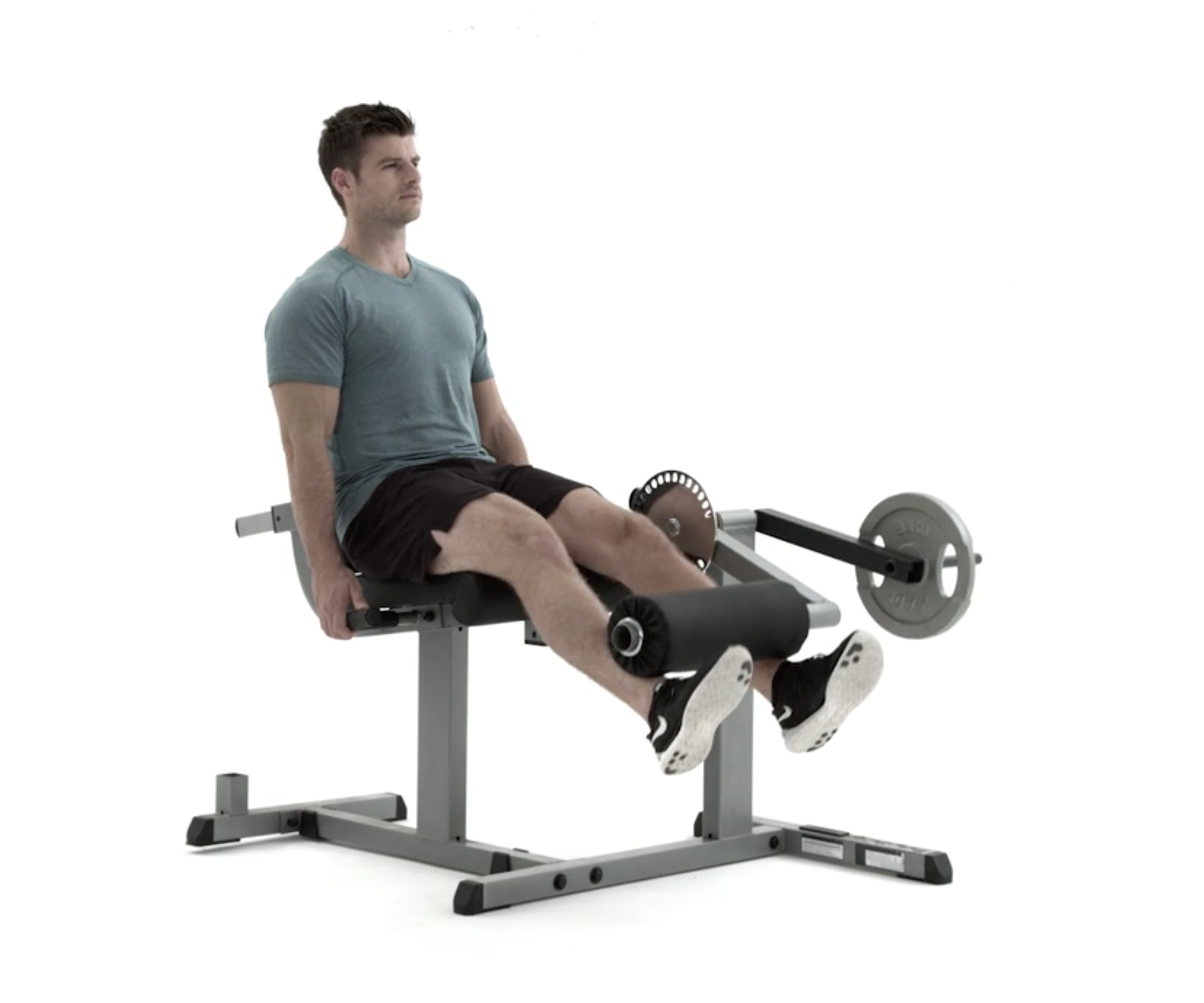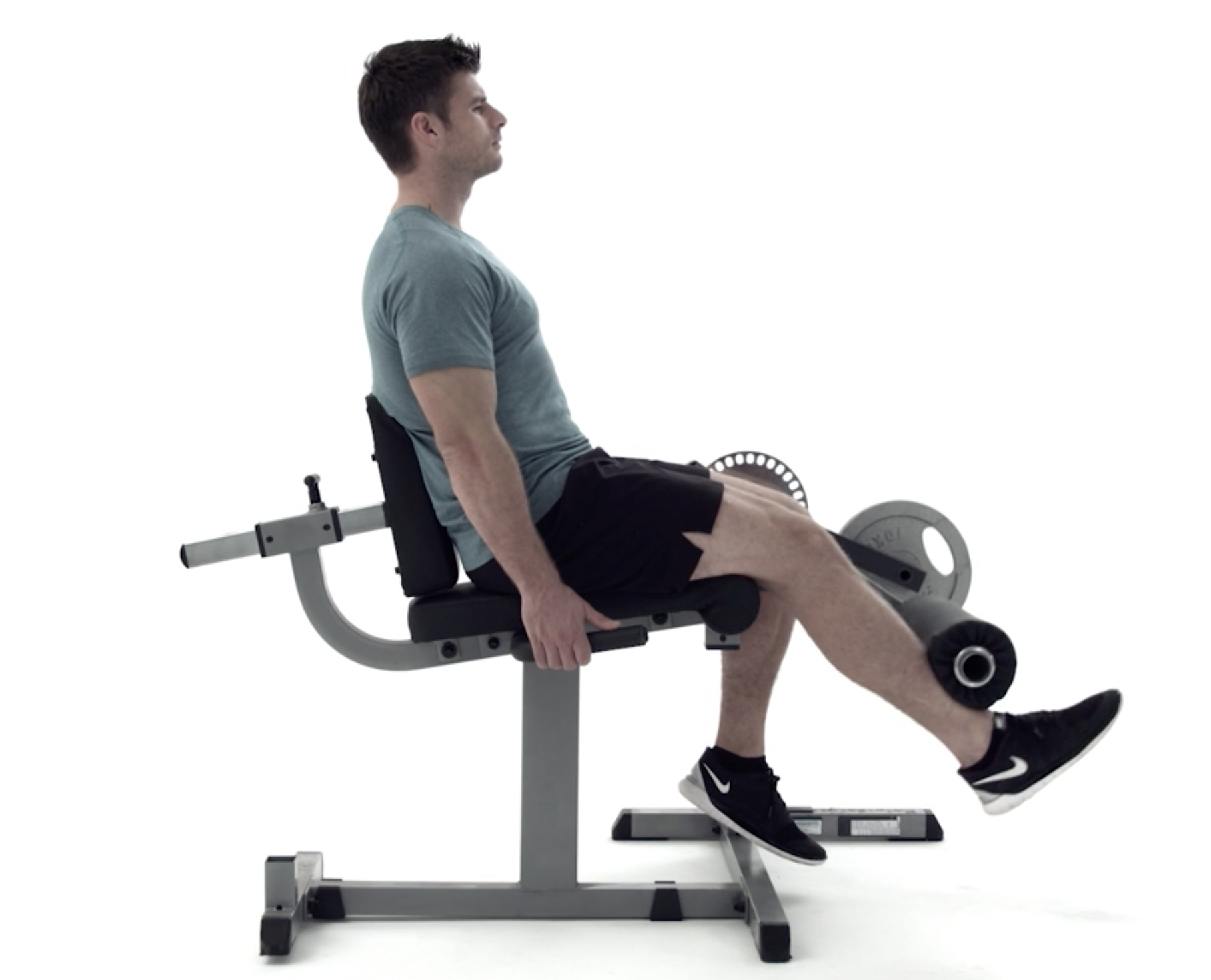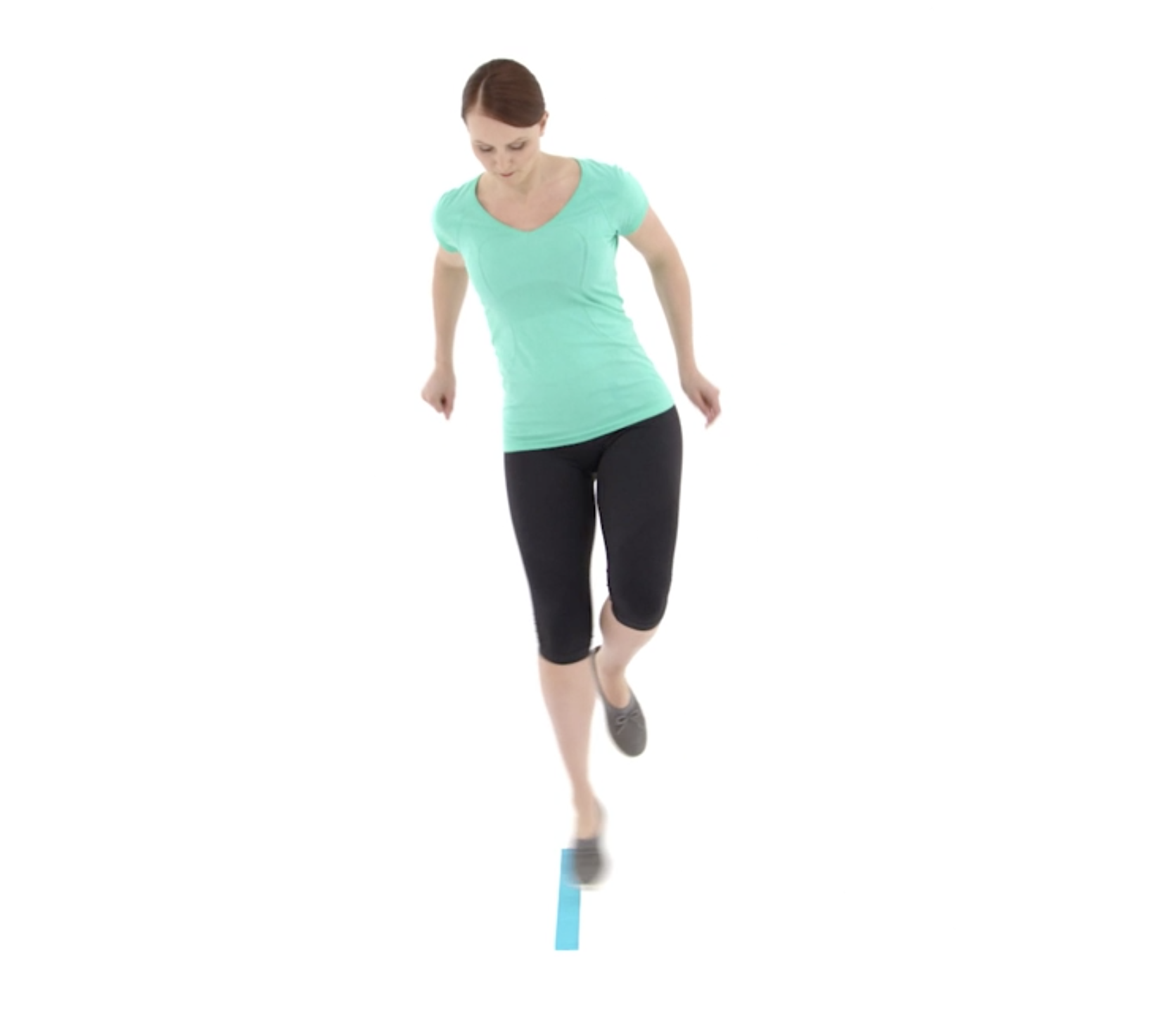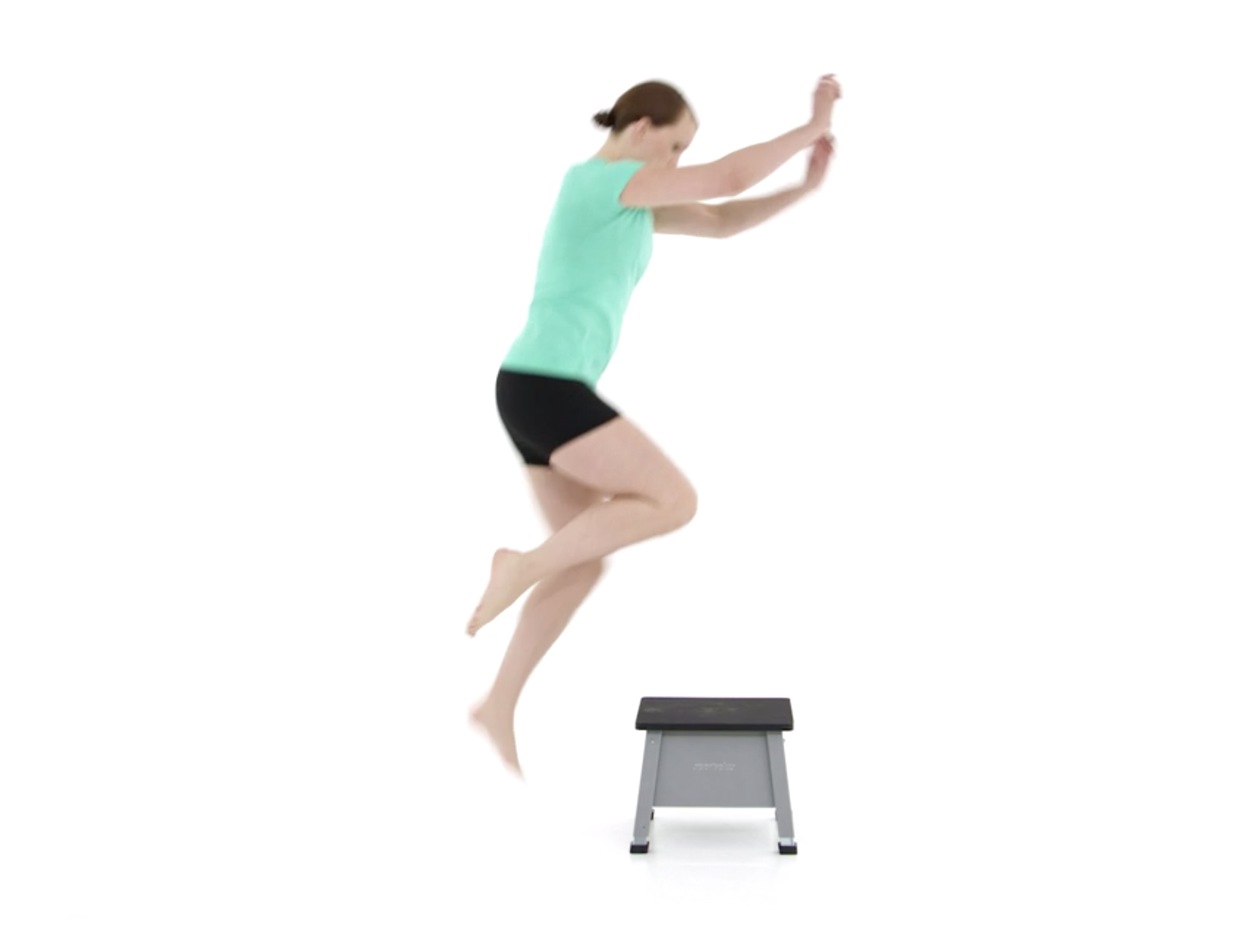Patella Tendonitis will usually present as pain on the inferior pole of the patella (kneecap). The inferior pole is the very bottom edge of the kneecap. Patella Tendonitis pain is usually very localized, meaning it is isolated to a small area that you could point to with one or two fingers. The pain is usually worse with running. It will also react badly to plyometric (fast) activities such as jumping, hopping and sprinting.
In my previous posts on tendonitis I discussed the pathology and how the science of tendon rehabilitation has developed. I also discussed how the term tendinopathy would be more accurate than tendonitis. To make this article easy to understand, I’ll be using both the commonplace Patella Tendonitis and the more accurate Patellar Tendinopathy. If you’d like to check out those articles, you can find them here:
Tendonitis Treatment for Runners
Patella Tendonitis
The patellar tendon is a band of connective tissue that connects the patella (kneecap) to the tibia (shin bone). The quadriceps (thigh) muscle attaches to the top of the patella. So the patella tendon is effectively the quadriceps tendon and it is often referred to as such.

A tendon is a strong band of connective tissue that connects your muscles to your bones. Essentially, muscles become tendons before they attach to bones. For this reason, the muscle and tendon together are sometimes referred to as the musculotendinous unit.
Tendons differ from muscles in that they do not contract (shorten). If you think of your muscle as an elastic band that can stretch and shorten you can think of your tendons as more like bits of string or rope. Rope doesn’t stretch or shorten, it just stays the same length. It transmits force to the bone to produce movement but it does not generate force (muscles do that).
If we continue to think of tendon like a rope then we can consider the little fibres that make up the rope the same as the little collagen fibres that make up the tendon. These collagen fibres are little strands of protein that are organized in progressively larger bundles to create the tendon:
The job of the tendon is to transmit force generated by the muscle to the bone to produce movement. To straighten your knee you will contract your quadriceps muscle. At the end of this muscle is the patella and the patellar tendon. When you contract your quadriceps muscle it pulls on the patella and the patellar tendon. The patellar tendon, in turn, pulls the on the tibia to straighten the knee.
What is Patellar Tendinopathy?
Patellar Tendinopathy (aka Patella Tendonitis) is a difficult condition to define. There are two features of the condition. One is that the tendon itself will feel painful and the second is that the arrangement of the collagen we discussed above will look a little disorganized on imaging (like ultrasounds scans or MRIs). The difficulty here is that we often come across people with one of those features but not the other. Many people complain of tendon pain but appear to have normal tendons on imaging. Also, many people show signs of collagen disorganization on imaging but are not experiencing any pain (Rio 2013).
To get around this confusion I use my own little criteria that happily seem to agree with those set out by tendon expert Dr Peter Malliares. My criteria for determining when you have tendinopathy require your symptoms to meet two conditions:
- Pain is local to the tendon (you can point at it with your finger)
- Pain is load dependant (gets worse with loading and better with rest)
For Patellar Tendinopathy (Patella Tendonitis) we expect the pain to be a small area just at the inferior pole (bottom edge) of the patella (kneecap). We expect it to be worse with running and to get really angry if we do a lot of hopping or jumping.
How do I fix Patellar Tendinopathy?
There has been a lot of research done over the years on how best to treat tendon problems. It’s a really big topic so we’re going to cut to the chase and get right into the primary treatment for tendinopathy, loading. However, if you want to get the whole story, go back and check out that series on Tendonitis in Runners that I mentioned earlier. You can also check out my podcast on tendinopathy if you’re interested:
So, loading is our key treatment for tendinopathy. We are going to use loading exercises to effectively strengthen the tendon so that it is able to tolerate more load. When I say load or loading I am referring to any movement or exercise that places stress on the tendon. In the case of the patellar tendon, when we sit in a chair or lie on a bed the patellar tendon is completely unloaded. When stand up out of the chair the quadriceps muscle contracts to pull the patella (kneecap) which in turn pulls on the patella tendon. This, in turn, pulls on the tibia (shin bone) to straighten the knee as we rise.

Loading exercises are simply different ways of loading the patellar tendon by asking the quads muscle to generate force. The best exercise to isolate the load on to the patellar tendon is the seated knee extension or, as I like to call it, the quads curl.

Now, I know what you’re thinking…
But that’s not functional!
Well, actually, maybe you weren’t thinking that. But if you’ve spent any time around Physiotherapists or Personal Trainers in the last decade you may have been indoctrinated into the Cult of Functional. I will address this quickly and move on. “Functional” exercises are usually thought of as those that look like the sport they are trying to prepare you for. A step-up exercise would be a “functional” exercise for a trail-runner, for example.
Some people think “functional” exercises are “better”. Well, actually, exercises are just exercises. They are ways of putting stress on the body to achieve a specific adaptation. Just like tools, there is no “bad” or “good”. There is only “appropriate for the goal” and “inappropriate for the goal”. Since our goal is to load the patellar tendon, we will choose an exercise that does this more specifically than any other. Since the seated knee extension will only allow you to general force with the quadriceps (as opposed to a lunge, for which you can also use your hamstrings and glutes), then that’s the one for us.
Now, back to our regular scheduled program.
The trick to rehabilitating patella tendonitis is to determine how much load you need to put on your patellar tendon depending on your current state. To help us do this we can use my Tendon Loading Spectrum.
The tendon loading spectrum is a continuum going from very low load to very high load to help us grade the intensity of different types of load. If you have patellar pain with running then your tendon is unable to tolerate the type of load that running puts on your patellar tendon. Running puts a high plyometric (fast) type of load on your patellar tendon. So we can say that your patellar is unable to tolerate ‘fast loading’. However, what if you also have pain when you walk? Walking puts a ‘light-slow’ type of load on your patellar tendon. So if you get pain with walking then your patellar is unable to tolerate ‘light-slow’ loading.
We need to determine where on my tendon loading spectrum you currently sit based on your symptoms. Once we know where you currently sit we can decide what type of loading program (i.e. what type of exercises) we need to start with. You do those loading exercises for a few weeks and then your tendon will start to adapt. As your tendon adapts to the loading you will find it can tolerate more intense loading. Then we increase the intensity of the loading exercises to stimulate further adaptation. In this way, you move from the low end of the tendon loading spectrum up to the high end. Once you get all the way to the top, your tendon will tolerate very intense loading without pain. Then you will be able to run as much as you like.
First of all, we need to decide where you currently sit on the tendon loading spectrum. For this purpose I’ve divided the loading program into four phases that are roughly based on some research by Silbernagel and colleagues (Silbernagel 2007). Based on your patellar tendon pain you can decide where you sit on the tendon loading spectrum and, therefore, which phase to start in.
- Painful during or after walking = Phase I
- Walking is pain-free but running is painful immediately = Phase II
- You can run for more than 10 minutes but the tendon hurts afterwards (or the next day) = Phase III
- You can run as much as you want without pain = Phase IV
Phase I – Static Loading
If your patella tendonitis causes pain during or after walking then we can say that your patellar tendon is unable to tolerate light-slow loading. So you would sit around the very lowest end of the tendon loading spectrum.
In phase I the goal is to build some very basic load tolerance in the tendon. Isometric load is the easiest load for the tendon to tolerate, so let’s start there.
Sit on the seated knee extension machine (ok, I’m switching to quads curl from now on as it’s a way better name). Put the pin to the very heaviest setting. Yep, you heard me, the heaviest weight on the machine So much that you couldn’t possibly lift it. That’s the point.
Now, start to push gently, the weight won’t move. As long as it doesn’t hurt, push a little harder. If that doesn’t hurt, push a little harder still. As long as it doesn’t hurt, keep pushing harder. If it does start to hurt, lighten up the pressure a little and hold for 45 seconds. If it doesn’t start to hurt, just keep pushing harder and harder until you’re pushing as hard as you can, now hold it for 45 seconds. Repeat for 5 times 45 seconds (5×45”).

1-5 times per day
This is an isometric exercise. Contracting your quads muscle really hard but not moving. It is the easiest type of loading for your tendon to tolerate. So this is where we “get on the ladder” of the tendon loading spectrum if the tendon is really painful and easy to irritate. You can also do this exercise at home by placing a dining chair in front of a wall. Try to straighten the knee in the same way as on the quads curl machine but you are pushing the wall with your foot. Obviously the wall won’t move so you can then just build up the intensity of your push to the highest amount your tendon (or foot) can tolerate.
You’re also going to try some crazy-light quads curls. Put the pin on the lowest setting on the machine. Try and do a really slow quads curl. If it doesn’t hurt more than a 4 out of 10, it’s acceptable. If the pain is 5 out of 10 or more, your tendon is not tolerating the load and is not ready for this exercise. In that case you would stick to the isometric exercises for a few days or a week. Then try the really-slow, really-light quads curl again. Once your tendon can tolerate it, you’re going to add this exercise to your program. Start with 3 sets of whatever number of repetitions your tendon can tolerate, shooting for 15.

Once a day
It’s beneficial to use a metronome for external pacing. If you download any metronome app you can set the beats per minute to 20. At 20 bpm you will hear a beep every three seconds. All you need to do is reach the top of the quad curl on one beep and the bottom of the quad curl on the next beep. Then you will be taking 3 seconds up and 3 seconds down. We do this because it slows us down. Increasing load tolerance in tendons seems to be very much related to something called time under tension. This basically means that if you rush through your sets the tendon will not be under load for very long. That will reduce the overall loading on the tendon and, therefore, the tendon will not strengthen as much in response.
Let me emphasize here, this is not supposed to be a prescriptive program of exercises. What I hope to convey is that the key to rehabilitating your patellar tendon is progressively increasing it’s load tolerance. You need to work out what it can tolerate, load it at that amount and then progressively increase the loading as the tendon adapts. You do not need to use these exact exercises or sets or reps. You can do your exercises every day or a few times a week. You can just do quads curls or you can do squats, or lunges, or step ups. The goal is to increase the load tolerance, how you do that is up to you.
Phase II – Light-Slow Loading
If you have patellar tendon pain with running but not with walking then we know that your patellar tendon can not tolerate fast loading. We know you can tolerate light-slow loading but we don’t know if you can tolerate heavy-slow loading. So we’re going to drop you onto the tendon loading spectrum around here:
In phase II the goal is to increase the load tolerance of the patellar tendon until it is able to tolerate fast loading. We do this by starting with relatively light loading exercises around bodyweight and then progressively increasing the load by adding weight.
So let’s say you started on the quads curl using both legs and pushing 10 lbs. After doing this every day for a week you find you can do it with one leg without too much pain. So that’s what you do. Now you are doing one leg quads curls every day easily. You try moving the pin to the next heaviest setting on the quads curl machine. That goes well, the next day you add some more weight. You add more weight each time for 3 day in a row, but then it starts to hurt. So you lighten the weight a bit and work at this weight for 2 weeks. Let’s say 40 lbs.

Once a day
This is a key point, the loading program you use needs to be progressive. That means the load is steadily increasing over time. This is what stimulates the adaptation in the tendon. Think of it like marathon training. You don’t start your marathon training at 70k per week. You start with around 35k a week and progressively increase the mileage to increase your tolerance to running. With our tendon loading program we are progressively increasing the loading in order to increase the tolerance of the tendon to running. Just like marathon training takes a long time, tendon training takes a long time. I always tell my clients to remember “tendons are slow, think months not weeks”.
At this point you have stopped the isometric exercises as they were just too easy, good work. After a few more weeks you’ve moved the weight up to 60 lbs. Now you are getting quite a bit of muscle soreness in your quadriceps after each session. Good, you’re ready for Phase III.
Phase III – Heavy-Slow & Plyometric Loading
Now you’re loading the patellar tendon pretty heavy. So heavy that your muscles (and tendons) need a day to recover after each session. You’re now sitting at the heavy-slow point on the tendon loading spectrum.
So we drop down to 3-4 workouts a week. Same quads curl exercise, but more weight and less reps. In fact, every 2 weeks you drop the reps down and increase the weight. Remember to use the heaviest weight you can for a given number of reps. We call that Rep Max. An example of progression in Phase III might look like this:
- 2 weeks: 3×15@60lbs
- 2 weeks: 3×12@70lbs
- 2 weeks: 3×10@80lbs
- 2 weeks: 4×8@90lbs
- 2 weeks: 5×5@110lbs
In phase III we also need to start building up our plyometric (fast) load tolerance. We want the patellar tendon to be so resilient it can tolerate tons of fast loading without batting an eyelid. If we can do that the tendon will tolerate more and more running. Once the tolerance of your patellar tendon exceeds the amount of running in your training program, you can consider yourself fully rehabilitated. You can now run as much as you want without pain. Phase III usually takes the longest (remember, “think months not weeks”).
Each workout is now going to include some plyometrics.


Add more reps and sets of the plyometrics each week. An example of plyometric progressions in Phase III could be:
- 2 weeks: Line Hops 3×30 | Box Hops 3×5
- 2 weeks: Line Hops 4×30 | Box Hops 4×5
- 2 weeks: Line Hops 4×40 | Box Hops 4×8
- 2 weeks: Line Hops 4×50 | Box Hops 4×10
- 2 weeks: Line Hops 5×50 | Box Hops 5×10
Phase IV – Maintenance
Once you can run as much as you want without pain then you can consider your patellar tendinopathy fully rehabilitated. Unfortunately, recurrence of patellar tendinopathy is common and your risk of developing it on the other side is high. So we want to try and make sure your patellar tendons on both sides are as strong and resilient as possible. I recommend anyone who has had trouble with patellar tendinopathy in the past continue loading exercises 1-2 times per week as long as they continue running. Now, that might sound a bit annoying, but when you consider that strength training may reduce overall injury risk by up to 60% and improve running economy by as much as 8% you can see that there is a lot to gain from adding some strength training to your running training.
The goal in phase IV is to maintain all of the load tolerance you have built up in the patellar tendon. As long as the load tolerance of your patellar tendon exceeds the load placed upon it by your running training, you will not get any pain. An example phase IV maintenance program might look like two sessions a week of:
- Quads Curl 5×5 @ Rep Max
- Line Hops 5×50 | Box Hops 5×10